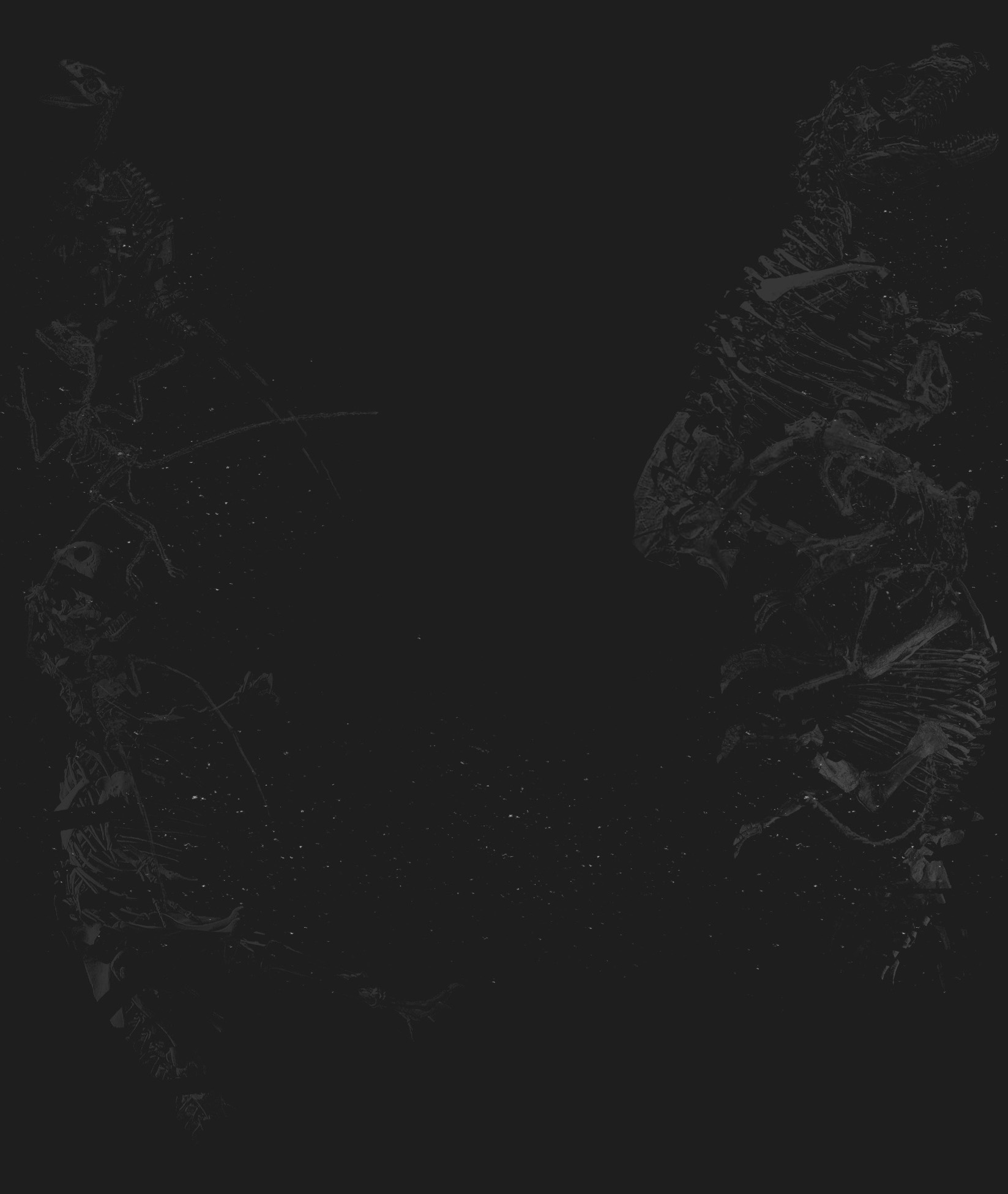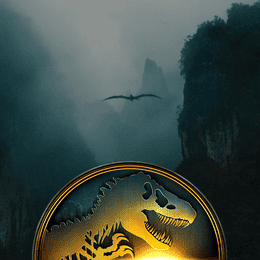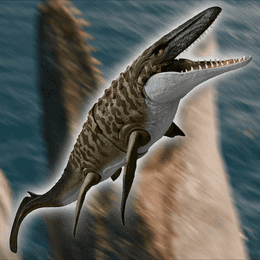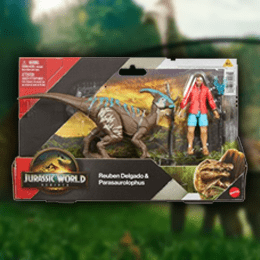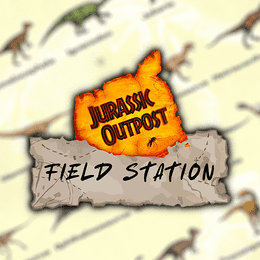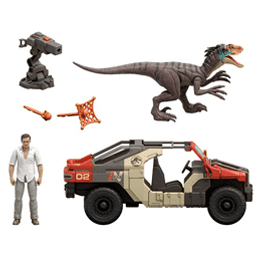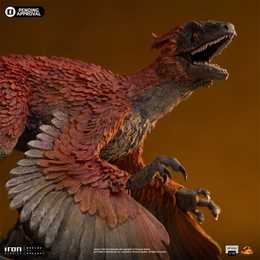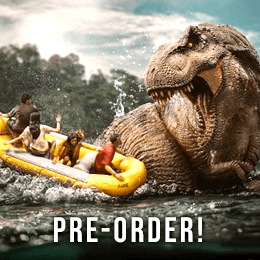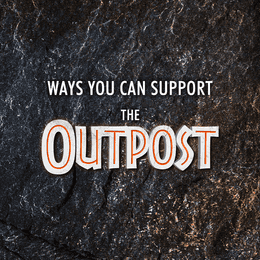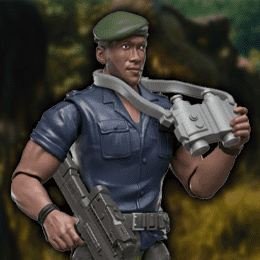Synopsis
Four years after the failure of Jurassic Park on Isla Nublar, John Hammond reveals to Ian Malcolm that there was another island (“Site B”) on which dinosaurs were bred before being transported to Isla Nublar. Left alone since the disaster, the dinosaurs have flourished, and Hammond is anxious that the world see them in their “natural” environment before they are exploited
SOMETHING HAS SURVIVED |
The Lost World: Jurassic Park debuted May 19th, 1997, and was the second installment in the Jurassic Park franchise. The film was roughly based from Michael Crichton’s novel The Lost World and was produced by Universal Pictures and Amblin Entertainment.
The Lost World: Jurassic Park is set on Isla Sorna, an island 87 miles east of Isla Nublar. Also known as ‘Site B’ – a Jurassic Park compound facility and home to the surviving dinosaurs that were genetically engineered for the original park.
Development
Crichton had never initially written a sequel and refused to do so when pressured by fans and the studio. But after the success of the first film, Steven Spielberg and David Koepp persuaded Michael when the three of them laid out groundwork for the second film. Michael then began work on his novel and in 1995, development on the sequel was underway.
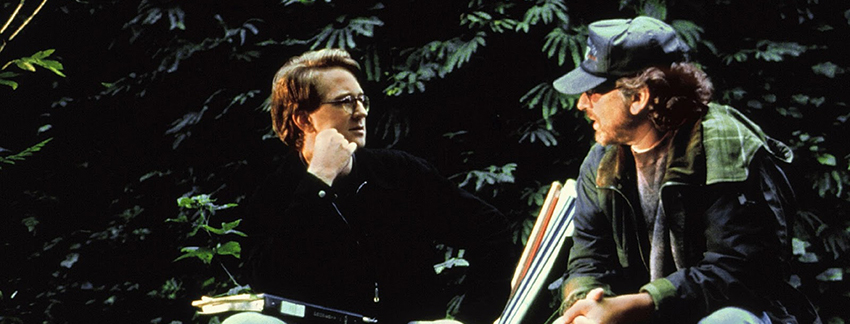
The film began production while Michael was still finishing his novel and it was then that Steven Spielberg and David Koepp decided to do away with many of the novels essential plots and ideas. The movie borrowed the idea of the dinosaurs being on a second island called, ‘Isla Sorna’, and the inclusion of the research mobile-trailers and their scene in which a pair of Tyrannosaurs slowly pushes them off of a cliffs edge. Spielberg and Koepp loved the idea of dinosaurs being captured for their use on the mainland and much of the story was adapted from the 1962 film, Hatari!.
The plot and overall tone of The Lost World is significantly darker than its predecessor in terms of character interaction and the films color and lighting choices. Much of the movie is filmed at night with daylight scenes only showing up a few times and for short periods. The film also capitalized on it’s usage of dinosaur animatronics and also used a much heavier dosage of digital effects and sound created again by ILM.
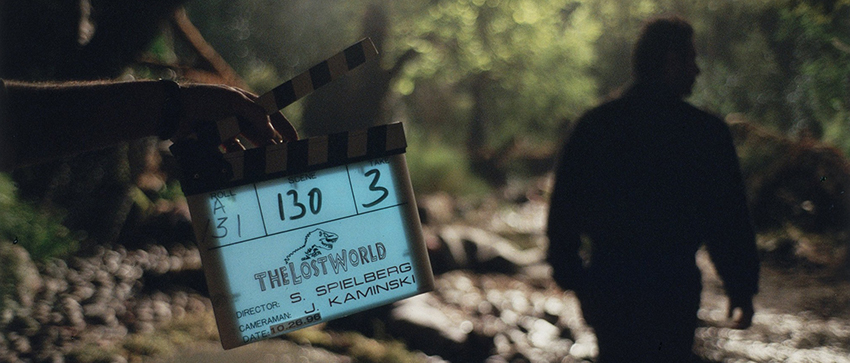
Numerous locations were considered for filming, including the Caribbean, Central America and New Zealand, but the production team which included Production Designer Rick Carter, decided on the redwood forests of Eureka, California. Rick Carter had wanted to now see dinosaurs in a more natural environment that would have been close to the environment they lived in 65+ million years ago.
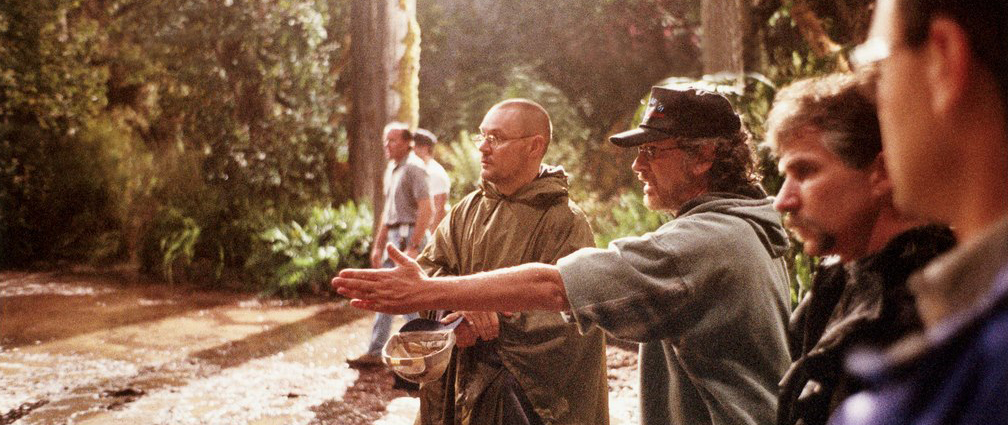
Mercedes-Benz signed an endorsement deal for the movie, to introduce their new first sports utility vehicle, the ML320. Jeff Goldblum was given one of these vehicles post-filming.
Production
Filming for The Lost World: Jurassic Park commenced on September 5, 1996 at Fern Canyon in California’s Prairie Creek Redwoods State Park. Filming continued in California for two weeks in other state parks and on private land. The opening sequence showing the island of Isla Nublar was filmed in Kauai, Hawaii.
Filming then moved to stages at Universal Studios Hollywood in the fall of 1996, with the Site B workers village being constructed there. The Universal Studio’s multi-storey car park famously stood in for a cliff of Isla Sorna where the research trailers are pushed over by the Tyrannosaurus pair.
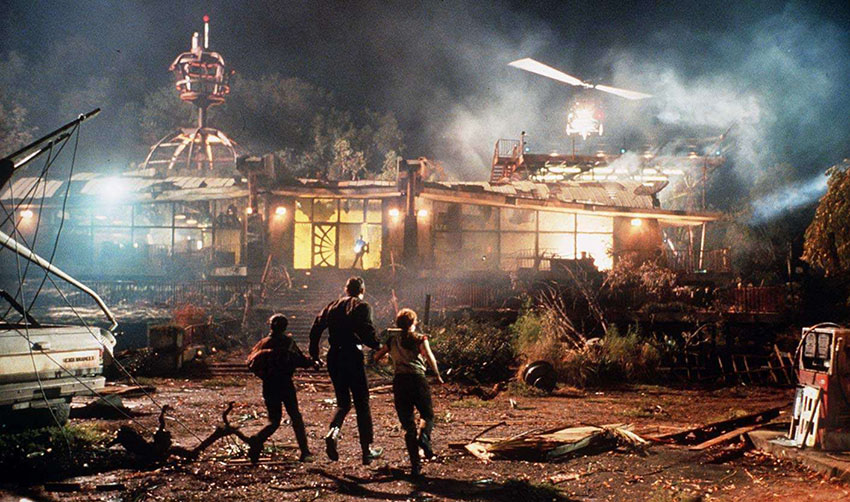
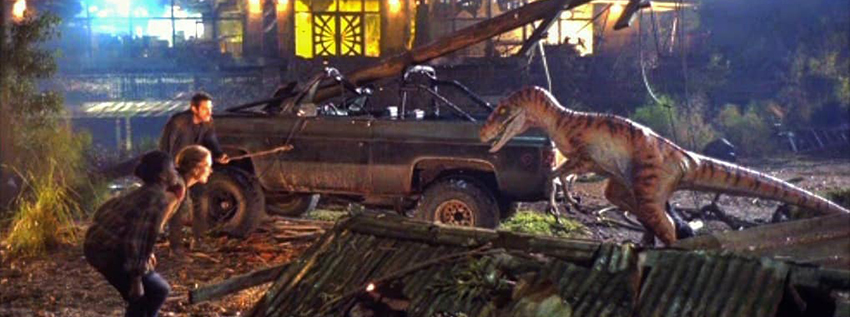
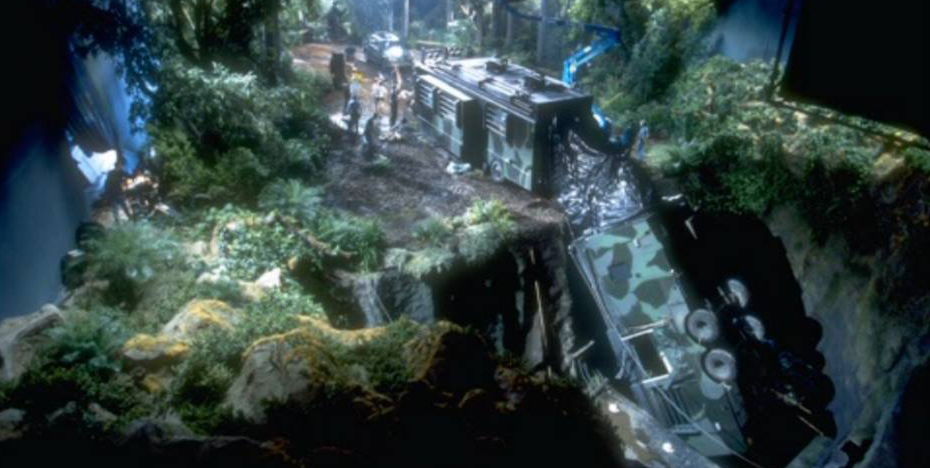
Some of the scenes were scheduled to be filmed at New Zealand’s Fiordland National Park, but was cancelled due to high costs. John Hammond’s residence were filmed during the final week of filming at Mayfield Senior School in Pasadena, California, with filming concluding ahead of schedule on December 11, 1996.
Cinematographer for Jurassic Park Dean Cundey did not return for The Lost World – instead Steven Spielberg’s recent collaborator Janusz Kamiński was brought in to give the film a more darker, artistic feel.
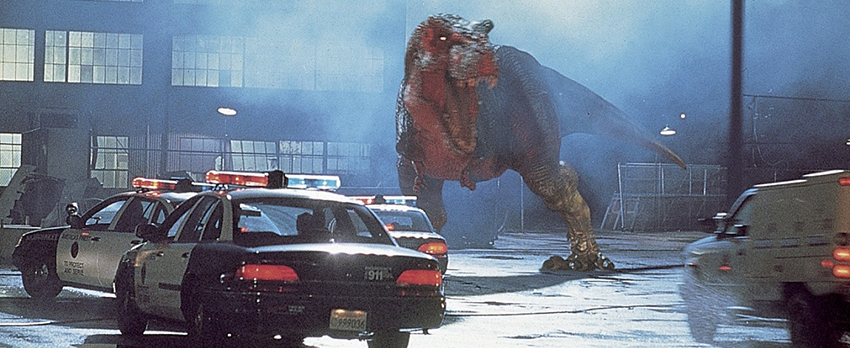
The original ending was supposed to feature Pteranodons attacking the escape helicopter, but this was cut when Steven Spielberg suggested the San Diego sequence, which would bring dinosaurs to the mainland. The concept was initially going to feature in a third Jurassic movie, but Spielberg decided to put it into the second as he did not think he would direct another. The sequence takes place in San Diego, California, but only one sequence was actually filmed there. When the InGen helicopter flies over the wharf and banks towards the city, that is actually San Diego. The rest of the scenes were filmed in Burbank, California.
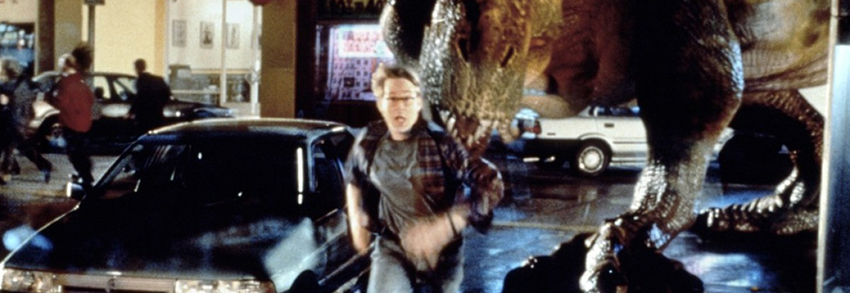
Many members of the crew can be seen in a crowd of screaming pedestrians running from the Tyrannosaurus Rex.
Some elements from the original novel Jurassic Park that didn’t make it into the film were instead used in The Lost World. The opening sequence of a vacationing family’s young daughter being attacked by a group of Compsognathus was very similar to the opening scene in the original novel. Dieter Stark’s Compy related death was also similar to John Hammond’s demise in the novel. The scene where Nick, Sarah, Kelly and Burke get trapped in the waterfall is taken from the novel, where Tim and Lex are trapped behind a man-made waterfall with the T-Rex attempting to eat them. Roland Tembo shoots the T-Rex with a tranquilizer in the same way that Robert Muldoon did in the novel.
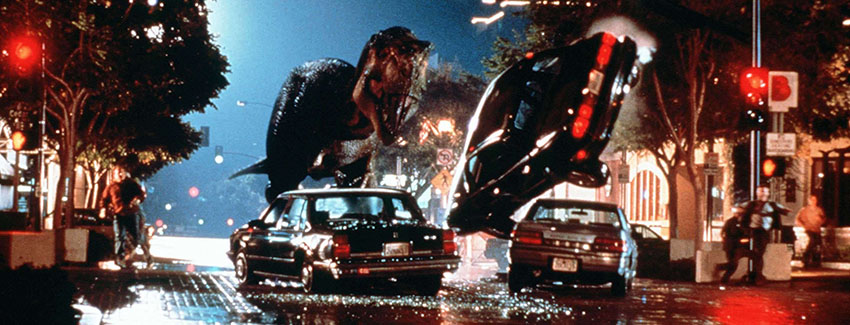
According to paleontology consultant Jack Horner, the waterfall scene was written partly as a favor to him by Spielberg. Burke is a representation of Horner’s real-life rival Robert Bakker – who believes that the T-Rex is a predator, while Horner views it as primarily a scavenger. Spielberg wrote Burke into this part to have him killed by the T-Rex as a favor. After the release of the film, Robert Bakker recognised the hints and loved it, sending Jack Horner a message: “See, I told you T-Rex was a hunter!”.
The characters of Roland Tembo and Nick Van Owen were named by screenwriter David Koepp, who referenced one of his favorite songs, “Roland the Headless Thompson Gunner” by Warren Zevon. Koepp said “since Roland is a mercenary in the song, that seemed like a good name for the hunter-for-hire in our movie. While I was at it, I thought it would be fun to make his nemesis’ last name Van Owen, like in the song.”
Post-Production
Composer for Jurassic Park John Williams returned for the sequel, but avoided using most of the previous film’s main themes in order to keep the sequel fresh and unique. He wrote a more action oriented score. The tone and style is very different to that heard in Jurassic Park. While the first film balances tense action scoring and horror elements with a sense of wonderment and awe, the sequel instead avoids the wonderment and awe and replaces it with a more jungle sounding percussion, like congas, bongos, gourds, log drums and tabla.
Release
The Lost World: Jurassic Park released in theatres on May 23, 1997. The marketing campaign was more extension than the first film, at the cost of $250 million with 70 promotional partners. The leading merchandising partners were Burger King, JVC and Mercedes-Benz. Timberland Co. also made their first film tie-in.
A pineball machine and an arcade game was developed by Sega and a four-part comic series were released by Topps Comics. The Fox Network paid $80 million for the exclusive broadcasting rights which debuted on November 1, 1998 with two deleted scenes featured. These two scenes can only be found on the DVD release.
The film reached a VHS and LaserDisc release on November 4, 1997, with the first DVD release following on October 10, 2000.
Jurassic Park was both a commercial and critical success with both critics and audiences pining for the sequel. The Lost World broke many box office records upon its release. It made $72, 132, 785 on its opening weekend in the U.S. which was the biggest opening weekend at the time and surpassing Batman Forever which sat at $52.8 million. It held this record until 2001. On May 25, 1997, The Lost World took the record for the highest single-day box office take of $26,083,950 which it held until the release of Star Wars: Episode 1. It also became the fastest film to pass the $100 million mark achieving the feat in just six days.
The film grossed $229,086,679 domestically and $389,552,320 internationally with a total gross of $618,638,999 worldwide, becoming the second highest grossing film of 1997 behind Titanic.
The film was a commercial success and received mixed reviews from critics. Rotten Tomatoes gives a score of 51% with 35 out of 68 reviewers giving it a positive review with the summary: “The Lost World demonstrates how far CG effects have come in the four years since Jurassic Park; unfortunately, it also proves how difficult it can be to put together a truly compelling sequel.”
Jurassic Park was given three stars by Roger Ebert who gave The Lost World only two, stating that “It can be said that the creatures in this film transcend any visible signs of special effects and seem to walk the earth, but the same realism isn’t brought to the human characters, who are bound by plot conventions and action formulas.”
Conversely, Kevin Thomas of the Los Angeles Times saw improved character development over the original, saying, “It seemed such a mistake in Jurassic Park to sideline early on its most interesting character, the brilliant, free-thinking and outspoken theorist Ian Malcolm (Jeff Goldblum) with a broken leg, but in its most inspired stroke, The Lost World brings back Malcolm and places him front and center,” calling it “a pleasure to watch such wily pros as Goldblum and Attenborough spar with each other with wit and assurance.”
The dinosaurs were even more developed as characters, with Stephen Holden of the New York Times saying, “The Lost World, unlike Jurassic Park, humanizes its monsters in a way that E.T. would understand.”
Spielberg confessed that during production he became increasingly disenchanted with the film, admitting, “I beat myself up… growing more and more impatient with myself… It made me wistful about doing a talking picture, because sometimes I got the feeling I was just making this big silent-roar movie… I found myself saying, ‘Is that all there is? It’s not enough for me.'”


